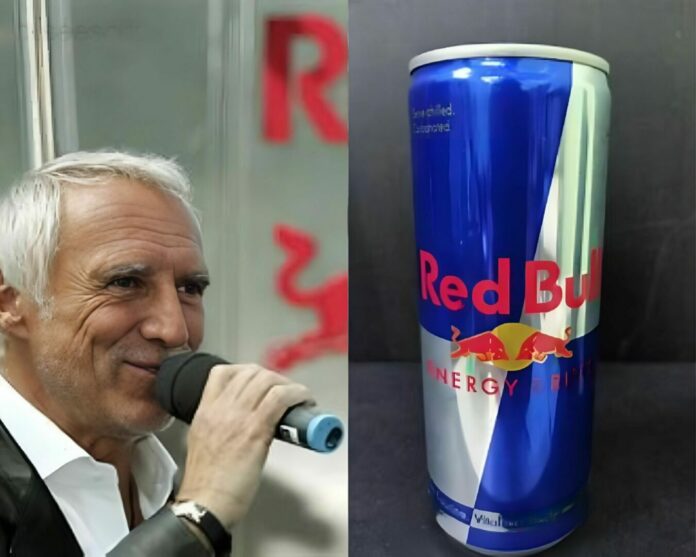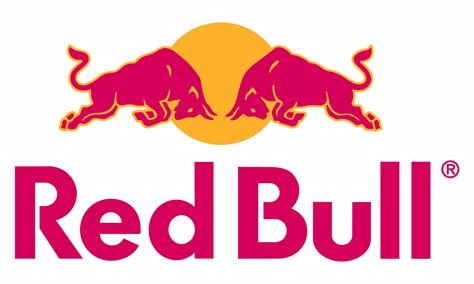Austrian sales guru and businessman Dietrich Mateschitz passed away aged 78 on Saturday 22nd October. He will forever be remembered as the co-founder of Red Bull energy drinks and F1 team owner.
Red Bull is one of the world’s most recognizable brands distributed in more than 170 countries. At the end of 2021, Red Bull distributed more than 10 billion cans globally generating $9 billion in revenue.
Who is behind this drink empire?
Red Bull is an Austria-Thai conglomerate. Austrian Dietrich Mateschitz and Thailand’s Chaleo Yoovidhya are the entrepreneurs behind the caffeine-filled concoction beloved by drowsy office workers and exam-cramming college students.
The drink was created by Chaleo and he named it Kraeting Daeng, which in Thai translation means the Red Gaur. A gaur is an animal that resembles a bull.
The logo on Red Bull shows two charging gaurs in red color and the sun behind it. They are symbolic. The charging gaurs represent power, the red signifies perserverance and the yellow sun backdrop symbolizes energy. Kraeting Daeng was a success in Thailand where it is originally manufactured.
Ditrich Mateschitz was born on May 20th, 1944 in an Austrian village called Sankt Marein. Dietrich Mateschitz didn’t look like the kind of man to end up a billionaire two decades later since Kraeting Daeng was launched, although he was showing signs of great entrepreneurship from a young age.
In fact, he had trouble finishing college taking 10 years, as opposed to the normal 4 years it took somebody at the University of Vienna. He completed college at the age of 28 with a degree in Business Administration.
He started working at Blendax, a German toothpaste manufacturing company, as a sales and marketing executive. In 1982, the company organized a business trip to Thailand and it was here that Mateschitz discovered Kraeting Daeng.
He got his hands on the drink and was immediately amazed by the drink’s jet lag ridding properties.
One day, when he was on a trip to Hong Kong, Dietrich read a news article that stated that ‘Lipovatin was Japan’s greatest taxpayer.’ It was from here on out that the ball really started rolling.
With his marketing genius brain, Dietrich saw a business opportunity for value addition to Kraeting Daeng, the drink he was hooked on because of its properties.
At the time, Chaleo had made the energy drink so successful in Asia, and this became pivotal to his mission to westernize the drink (Kraeting Daeng). It was a business opportunity too good to pass for him at that time. He could already envision the vast wealth he could accumulate from taking the drink to new heights.
Dietrich, not one to waste time, immediately quit his job and tracked down Kraeting Daeng’s owner, Chaleo Yoovidhya. At first, Chaleo was reluctant to partner with him but Dietrich managed to convince him eventually.
They agreed that Chaleo would be the head of Production while Dietrich would operate on the marketing and distribution front.
Each of them invested $500,000 into Red Bull GmbH and in 1984, Red Bull was founded.
From 1984 to 1987, Dietrich spent this time refining the taste of Kraeting Daeng-Red Bull for the western pallets and refining the brand’s marketing strategy.
Among the changes he made to the original version were carbonating the energy drink, swapping the packaging for the slim silver bottle can we know, and getting rid of the name Kraeting Daeng. Finally, Red Bull was released in 1987.
Mateschitz hired marketing research firms for the initial rollout. After half a million dollars and three years, they told him that customers hated everything from the name to the product’s taste.
Mateschitz had to go against the advice he had just paid for to release the energy drink. Dietrich decided to listen to his instinct and continued to pursue his vision.
Red Bull also faced regulatory hurdles. Energy drinks contain a number of stimulants, substances that often run afoul of medical regulations. Consumer safety agencies were concerned about Red Bull because it contained ingredients they’d never before approved.
Red Bull had to get approved by the Ministry of Health in every country before it could be sold on the market.
Austria approved it first in 1987, followed by Hungary, the United Kingdom and Germany. By 1988, Dietrich’s marketing savvy and expertise had sold the company over 1.2 million boxes. The beverage became wildly regarded as the first energy drink to win over consumers from east to west.
The success of upscaling their business to a global level turned Chaleo and Dietrich into multi-billionaires. This goes to show that as an entrepreneur, following your intuition is often a good idea.
As an entrepreneur, you would also need to have an innovative marketing strategy as much as data and facts are important. This is what Dietrich understood best and used it as a vantage point for his success. He knew that a new product in western nations would require a novel approach to marketing and advertising.
For this matter, Dietrich was an avid extreme sports enthusiast. Back in the day, very few corporates targeted sponsoring sports events. This is where Red Bull took all the points home against big firms.
Red Bull became the leading promoter of the sports industry worldwide. Mention any sport, particularly extreme sports, and you’ll find Red Bull in the mix of it.
This not only made Red Bull stand out in the world but also meant that they didn’t have to invest thousands of dollars in competing for advertising time during mainstream events.
Most importantly, Dietrich’s approach to sports signaled that Red Bull was more than just an energy drink. It was a lifestyle.
Some of the sports Red Bull has been involved in are Formula one, Football, Surfing, Skiing, Snowboarding, Mountain Biking, Cliff diving and many more. Little by little, Red Bull became synonymous with words like Adrenaline, Energy and Adventure; in short anything exciting.
In 2013, Red Bull sent Felix Baumgartner to space to attempt the biggest skydive from almost 124,000 feet (39,000 meters) with just a space suit and a parachute.
He hit supersonic speeds. Just imagine a human body hitting Mach 1.25, breaking the sound barrier by jumping from the stratosphere. Adrenaline! He made it safely back to earth. Click here to see the Felix Baumgartner space dive to earth.
Back then, this gave their slogan ‘Red Bull gives you wiiings’ a whole new meaning. The company even hosted events in Austria called Flugtag, german for ‘Flying day’ where they would challenge humans to come up with their own human-powered flying machines.
This is what Dietrich was about as a marketing specialist. Being in the event and having fun while creating a brand around the fun. By holding these fun events, Red Bull engages with customers in a deep way. As an entrepreneur, follow in Dietrich’s footsteps.
Dietrich’s Red Bull continuously focused on selling a feeling instead of just a product. This helped anchor Red Bull in the minds of their target group.
Dietrich died on October 22, 2022 as Austria’s richest man with an estimated net worth of $20 billion, and still owns 49% of Red Bull GmbH. He was aged 78 when he succumbed to cancer after battling it for a long time.
Dietrich Mateschitz never got married, but he did have a son whose name was Marc Gerhardt. His son was born in 1992 when he was dating Anita, who used to be a ski instructor. Dietrich and Anita had a two-year relationship.
Besides Red Bull, he has put money into companies like Topvet, which takes care of pets, and Burger King.









